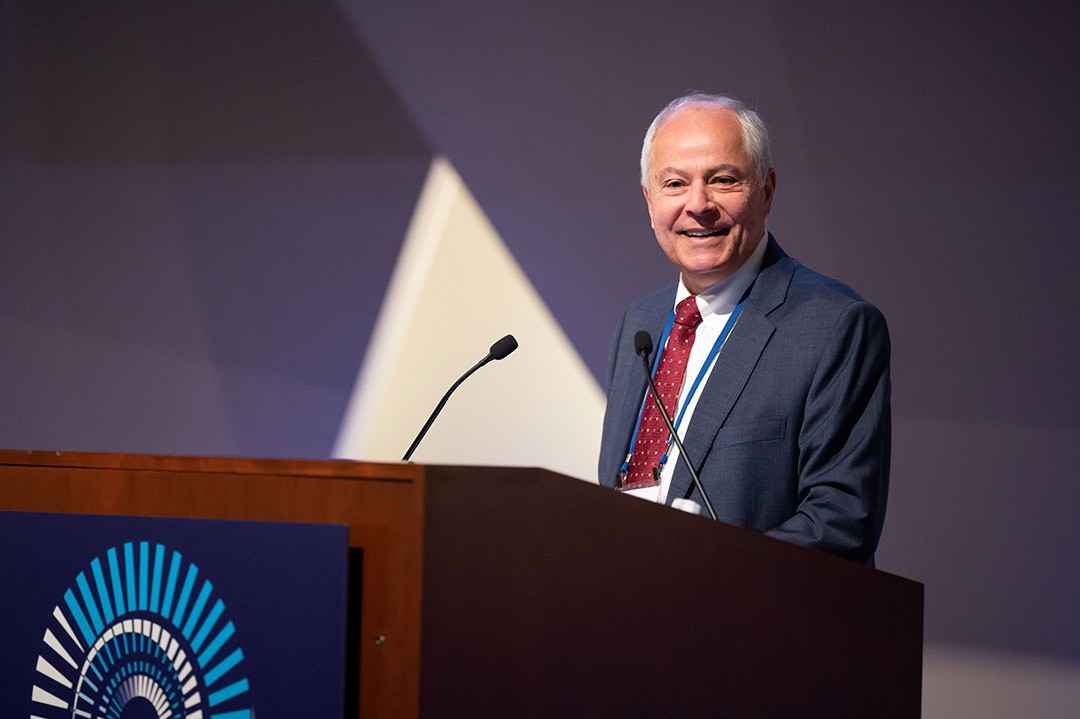REMADE Institute to lead 2024 circular economy tech summit in D.C. next month
REMADE Institute to lead 2024 circular economy tech summit in D.C. next month Rochester Institute of Technology


A National Institute to Host the 2024 REMADE Circular Economy Technology Summit & Conference

The 2024 REMADE Circular Economy Technology Summit & Conference will be hosted next month in Washington, D.C. by a national institute, led in part by Rochester Institute of Technology. The summit aims to highlight emerging strategies and technologies that can accelerate the adoption of a circular economy.
The REMADE Institute and Its Partners
The REMADE Institute, a public-private partnership established in collaboration with the U.S. Department of Energy (DOE) and with an initial investment of $140 million, is organizing the summit. The event is being held in partnership with the Ellen MacArthur Foundation and with key support from the DOE’s Office of Energy Efficiency and Renewable Energy (EERE), as well as several industry, trade associations, and academic sponsors.
Event Details
The summit will take place on April 10-11 at the National Academy of Sciences Building in Washington, D.C. It is strongly encouraged for industry innovators, academic and national lab researchers, business leaders, public sector representatives, and others working towards a circular economy to attend.
Building Critical Connections for a Circular Economy
Nabil Nasr, CEO of REMADE and associate provost and director of RIT’s Golisano Institute for Sustainability, emphasized the importance of the conference in building critical connections among industry leaders, academia, and policymakers towards a circular economy. Nasr stated, “Our ultimate objective is to advance the global conversation on a circular approach and how it can support the U.S. and nations around the world in meeting their multiple energy, environmental, manufacturing, industrial decarbonization, and economic goals.”
The Transition to a Circular Economy
Efforts are underway worldwide to transition from a linear economy to a circular economy. The circular economy aims to make-use-reuse-remanufacture-recycle, reducing energy consumption, greenhouse gas emissions, and the use of raw materials while increasing the supply and use of recycled materials. Manufacturing accounts for 25% of U.S. energy consumption and is the largest contributor to greenhouse gas emissions in the nation at 30%. Therefore, circular manufacturing is crucial in addressing these challenges.
Conference Agenda and Focus Areas
The conference agenda includes keynote and plenary speakers, as well as presentations on dozens of research papers. RIT will be among the institutions presenting research papers. Themed tracks will explore novel technologies and tools that advance the circular economy, focusing on key areas such as systems analysis, design for circularity, innovations in remanufacturing, mechanical recycling, and the pathway to net-zero emissions in manufacturing and materials.
About REMADE and Manufacturing USA
REMADE, founded in 2017, is the only national institute dedicated to developing innovative technologies that accelerate the U.S.’s transition to a circular economy. It is part of Manufacturing USA, a national network of 17 federally designated public-private partnerships focused on advancing U.S. global leadership in advanced manufacturing.
Last year’s inaugural summit and conference attracted over 300 attendees and featured nearly 60 presentations on peer-reviewed papers.
For more information about REMADE’s 2024 conference, visit here.
SDGs, Targets, and Indicators Relevant to the Article
1. Which SDGs are addressed or connected to the issues highlighted in the article?
- SDG 7: Affordable and Clean Energy
- SDG 9: Industry, Innovation, and Infrastructure
- SDG 11: Sustainable Cities and Communities
- SDG 12: Responsible Consumption and Production
- SDG 13: Climate Action
- SDG 17: Partnerships for the Goals
The article discusses the transition from a linear economy to a circular economy, which is connected to SDG 12 (Responsible Consumption and Production). It also mentions the importance of reducing energy consumption, decreasing greenhouse gas emissions, and increasing the use of recycled materials, which are relevant to SDG 7 (Affordable and Clean Energy), SDG 9 (Industry, Innovation, and Infrastructure), SDG 11 (Sustainable Cities and Communities), and SDG 13 (Climate Action). Additionally, the REMADE Institute is a public-private partnership, highlighting the importance of partnerships for achieving the goals, as stated in SDG 17 (Partnerships for the Goals).
2. What specific targets under those SDGs can be identified based on the article’s content?
- Target 12.2: By 2030, achieve the sustainable management and efficient use of natural resources.
- Target 12.5: By 2030, substantially reduce waste generation through prevention, reduction, recycling, and reuse.
- Target 7.2: By 2030, increase substantially the share of renewable energy in the global energy mix.
- Target 9.2: Promote inclusive and sustainable industrialization and, by 2030, significantly raise industry’s share of employment and gross domestic product.
- Target 11.6: By 2030, reduce the adverse per capita environmental impact of cities, including by paying special attention to air quality and municipal and other waste management.
- Target 13.3: Improve education, awareness-raising, and human and institutional capacity on climate change mitigation, adaptation, impact reduction, and early warning.
- Target 17.16: Enhance the global partnership for sustainable development, complemented by multi-stakeholder partnerships that mobilize and share knowledge, expertise, technology, and financial resources.
Based on the article’s content, the following targets can be identified under the relevant SDGs:
– Target 12.2: By promoting a circular economy, the efficient use of natural resources can be achieved.
– Target 12.5: The transition to a circular economy involves reducing waste generation through prevention, reduction, recycling, and reuse.
– Target 7.2: Increasing the supply and use of renewable energy is essential for achieving a circular economy.
– Target 9.2: Advancing the circular economy can contribute to sustainable industrialization and economic growth.
– Target 11.6: Implementing circular economy practices can help reduce the environmental impact of cities, including waste management.
– Target 13.3: The circular economy approach addresses climate change mitigation and adaptation by reducing energy consumption and greenhouse gas emissions.
– Target 17.16: The REMADE Institute’s partnership with various organizations demonstrates the importance of multi-stakeholder partnerships for achieving sustainable development goals.
3. Are there any indicators mentioned or implied in the article that can be used to measure progress towards the identified targets?
Yes, the article mentions several indicators that can be used to measure progress towards the identified targets:
– Energy consumption in the manufacturing sector: The article states that manufacturing accounts for 25% of U.S. energy consumption, indicating that reducing energy consumption in this sector is important for achieving SDG 7 (Affordable and Clean Energy).
– Greenhouse gas emissions from industry: The article highlights that industry is the single largest contributor to greenhouse gas emissions in the U.S., emphasizing the need to decrease emissions to achieve SDG 13 (Climate Action).
– Share of renewable energy in the energy mix: The article mentions the importance of increasing the share of renewable energy, which can be used as an indicator for progress towards SDG 7 (Affordable and Clean Energy).
– Waste generation and recycling rates: The article discusses the transition to a circular economy, which involves reducing waste generation and increasing recycling rates. Monitoring waste generation and recycling rates can help measure progress towards SDG 12 (Responsible Consumption and Production) and Target 12.5.
– Employment and GDP contribution of the industrial sector: The article mentions the goal of promoting sustainable industrialization, which can be measured by monitoring the industry’s share of employment and gross domestic product (GDP), as stated in Target 9.2.
SDGs, Targets, and Indicators
| SDGs | Targets | Indicators |
|---|---|---|
| SDG 7: Affordable and Clean Energy | Target 7.2: By 2030, increase substantially the share of renewable energy in the global energy mix. | Indicator: Share of renewable energy in the energy mix. |
| SDG 9: Industry, Innovation, and Infrastructure | Target 9.2: Promote inclusive and sustainable industrialization and, by 2030, significantly raise industry’s share of employment and gross domestic product. | Indicator: Employment and GDP contribution of the industrial sector. |
| SDG 11: Sustainable Cities and Communities | Target 11.6: By 2030, reduce the adverse per capita environmental impact of cities, including by paying special attention to air quality and municipal and other waste management. | Indicator: Adverse per capita environmental impact of cities, including waste management. |
| SDG 12: Responsible Consumption and Production | Target 12.2: By 2030, achieve the sustainable management and efficient use of natural resources. Target 12.5: By 2030, substantially reduce waste generation through prevention, reduction, recycling, and reuse. |
Indicators: Energy consumption in the manufacturing sector, greenhouse gas emissions from industry, waste generation and recycling rates. |
| SDG 13: Climate Action | Target 13.3: Improve education, awareness-raising, and human and institutional capacity on climate change mitigation
Behold! This splendid article springs forth from the wellspring of knowledge, shaped by a wondrous proprietary AI technology that delved into a vast ocean of data, illuminating the path towards the Sustainable Development Goals. Remember that all rights are reserved by SDG Investors LLC, empowering us to champion progress together. Source: rit.edu
Join us, as fellow seekers of change, on a transformative journey at https://sdgtalks.ai/welcome, where you can become a member and actively contribute to shaping a brighter future.
|








